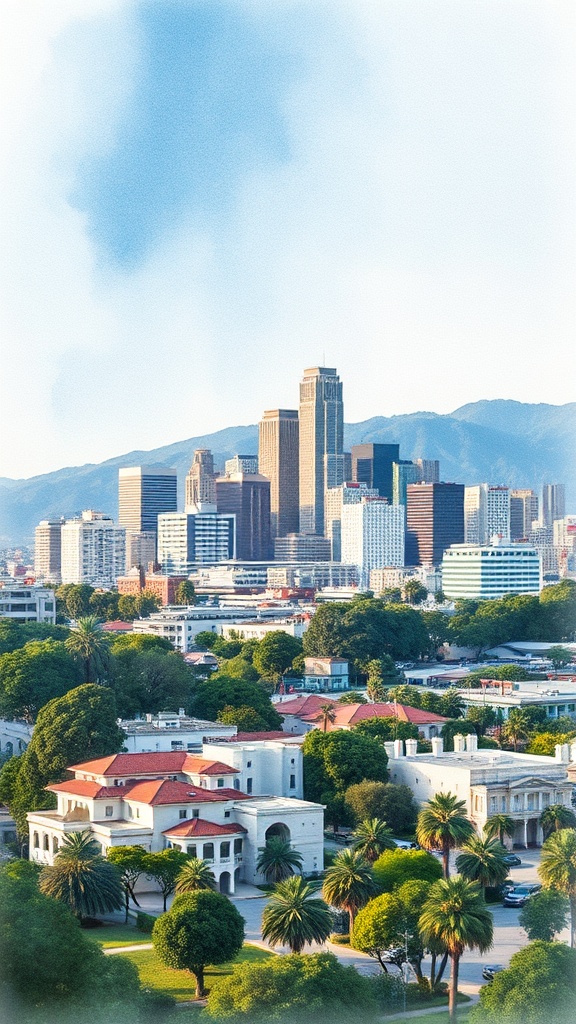Los Angeles is reshaping what urban life looks like—blending inventive transportation, housing experimentation, climate-forward planning, and an endlessly inventive cultural scene. For residents and visitors alike, the city feels both familiar and newly energized as neighborhoods evolve and new public spaces invite exploration.
Transit: more options, smarter commutes
A wave of transportation investments is expanding options beyond the car.
Light rail and subway expansions, enhanced bus corridors, and a growing network of protected bike lanes are making cross-city travel more practical. Many neighborhoods that once felt isolated are now connected by transit nodes, enabling shorter commutes and easier access to jobs, culture, and parks.
For practical travel, mix transit with walking or micromobility services for the “last mile” and check live transit apps to avoid surprises.
Housing: flexible living and neighborhood change

Rising interest in accessory dwelling units (ADUs), co-living models, and adaptive reuse of older buildings is changing how Angelenos find housing. Streamlined permitting and incentives in many areas have encouraged homeowners to add ADUs—small, independent units that can boost rental income or provide family housing. At the same time, demand for more affordable, mixed-use developments continues to shape redevelopment projects along transit corridors. Those weighing a move should prioritize neighborhoods with multimodal access and active community plans to get the best balance of convenience and value.
Climate and resilience: green infrastructure on the rise
Los Angeles is leaning into drought resilience, urban greening, and stormwater capture. New parks, bioswales, and rooftop gardens are more than aesthetics—they reduce heat, manage water, and improve air quality. Electrification of buildings and the rise of solar and battery programs are reducing reliance on fossil fuels while incentives make upgrades more attainable for homeowners and businesses. Expect urban design that prioritizes shade, native landscaping, and neighborhood-scale resilience projects.
Public spaces and the LA River renaissance
Revitalization efforts along the river corridor have turned former industrial edges into a string of parks, trails, and cultural destinations. Pop-up events, art installations, and improved waterfront access are attracting families and outdoor enthusiasts. Elsewhere, small parks, community gardens, and open streets programs are making public space more democratic—great for weekend exploring and for discovering local makers and food vendors.
Culture, food, and nightlife: inventive, diverse, and local-first
LA’s cultural fabric continues to be defined by its diversity: intimate music venues, experimental theater, robust independent film screenings, and a food scene that runs from high-concept tasting menus to beloved neighborhood taquerias. Food halls, night markets, and rooftop patios remain excellent ways to sample the city’s culinary range. Support local businesses by seeking out neighborhood favorites, attending daytime markets, or booking shows at smaller venues.
Practical tips for getting the most out of Los Angeles
– Use a multimodal approach: combine transit, bike lanes, and rideshares for efficient trips.
– Explore off-peak hours for museums and popular attractions to avoid crowds.
– Seek out neighborhood parks and local markets for more authentic experiences than tourist hotspots.
– Consider ADU opportunities or look for housing near growing transit corridors if planning a move.
– Follow local community groups for updates on park projects, street closures, and pop-up cultural events.
Los Angeles is becoming a more walkable, transit-friendly, and climate-aware metropolis while retaining the creative energy that defines it. Whether the goal is a new commute, a weekend of food exploration, or getting involved in neighborhood resilience projects, the city offers a mix of innovation and local flavor that rewards curiosity and discovery.